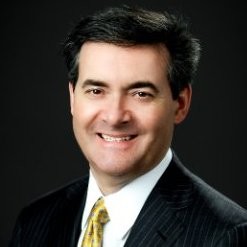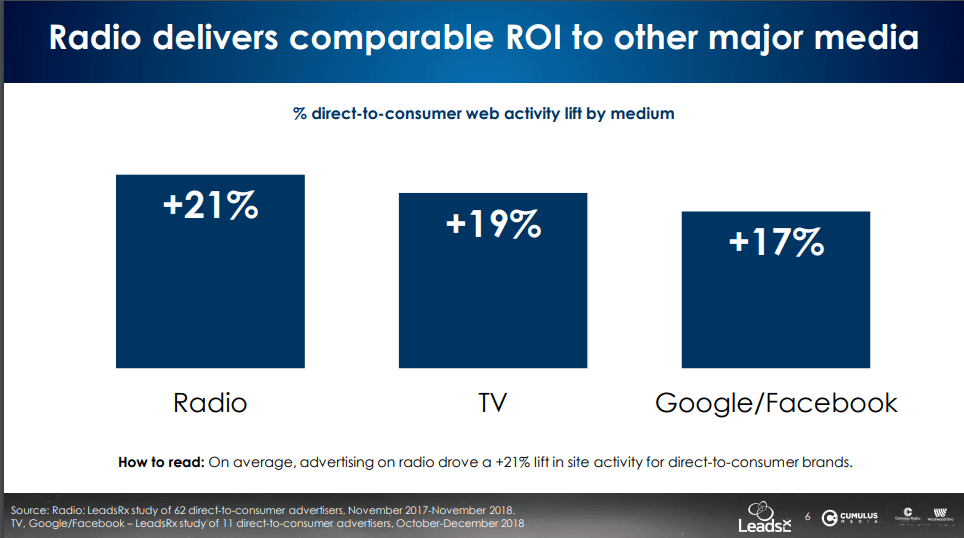
In this edition of BIA Advisory Services’ Vantage Points series, we share key learnings on new attribution research from Pierre Bouvard, Chief Insights Officer for Cumulus Media | Westwood One in a Q&A session with BIA’s managing director, Rick Ducey.
Bouvard is a media executive with significant experience in data-driven audience targeting and ROI measurement for Cross-platform, online and television. He has held sales, marketing, market/media research, strategic and operating roles and offers an experienced, thoughtful perspective on radio advertising.
The Vantage Point series taps the perspectives of various lookout points from around the local media and tech sectors. The views expressed do not necessarily reflect that of BIA. Contact Rick Ducey, Managing Director, BIA Advisory Services, if you have insights to share.
RD: Pierre, you recently sponsored two attribution studies to examine the efficacy of radio advertising specifically for Direct-To-Consumer brands, a category you described as, “an exciting new breed of advertisers that have burst onto the scene.” These studies show your continued commitment to show the ROI for radio as part of your “Westwood One ROI Guarantee.” Why did you do these studies?PB: Direct-To-Consumer (DTC) brands include names such as Blue Apron meal kits, Warby Parker eyewear, and Glossier skincare and beauty products. According to Terence Kawaja, from Luma Partners, DTC brands are “a category of relatively young startups in a relatively short period of time with relatively little capital that are garnering double-digit market share away from category incumbents that have been building brand equity, [and] brand loyalty for decades.”
We felt that with radio’s power to reach and engage consumers, the data would show a winning performance for these brands. We wanted to prove it and so we conducted two studies: one examined consumer awareness of 252 DTC brands, and the other measured attribution for ad campaigns run by 62 DTC brands in several different categories.
RD: Ok, what did you find out?
PB: We looked at several marketing touchpoints in these DTC campaigns, including of course, radio. Overall, a major finding of the LeadsRX attribution study was that AM/FM radio drove a +21% lift in web site traffic versus +19% for TV and +17% for Google/Facebook.
Even though radio outperformed the TV and digital touch points, Social Capital finds that, “Startups spend almost 40 cents of every VC (venture capital) dollar on Google, Facebook and Amazon.” Since DTC brands are digital natives, you’d expect that.
But then they will turn to TV. We see much less investment in AM/FM radio. The big takeaway for DTC brands is that AM/FM radio drives just as much site traffic as Google/Facebook despite far lower levels of investment. And armed with these findings, we’re confident radio sellers have a convincing case to win more business from DTC brands.

RD: What about the consumer study, what did you learn about consumer awareness of DTC brands?
PB: It’s a bit of a different story, it’s still an uphill battle for many of these DTC brands. The MARU/Matchbox national awareness study of 252 DTC brands found that only 17 have more than 50 percent consumer awareness levels.
The top 20 brands have an average consumer awareness of 70 percent. The next 30 brands have a consumer awareness of 24 percent and the remaining 200 brands have an average consumer awareness of under 10 percent. With radio’s ability to deliver reach and frequency schedules that are more cost efficient than TV and digital platforms, and now with the documented ROI, we feel that these DTC brands have a clear path to building brand awareness and equity using AM/FM radio.
RD: Pierre, where can we learn more details about these studies?
PB: You can find the full DTC blog and deck right here on the Westwood One site.

